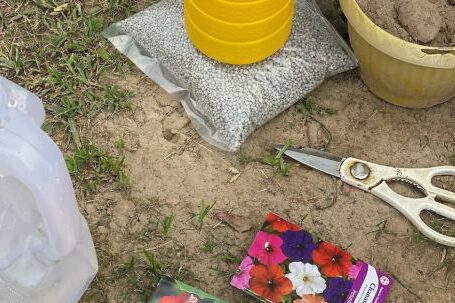As the colder months approach, it’s important to ensure that your garden is well-prepared for the winter season. While many people may think that gardening activities come to a halt during this time, there are still plenty of tasks that can be done to keep your garden healthy and thriving. In this article, we will discuss some key tips and strategies for maintaining your garden in winter.
Preparing the Soil
Before the ground freezes, it’s crucial to prepare the soil in your garden. Start by removing any debris, fallen leaves, and dead plants. This will prevent pests and diseases from overwintering in your garden. Once the area is cleared, add a layer of compost to enrich the soil and improve its structure. This will provide essential nutrients to your plants during the winter months.
Protecting Plants
To protect your plants from the harsh winter elements, consider covering them with a layer of mulch or straw. This will insulate the soil, prevent frost heaving, and keep the roots of your plants warm. Additionally, you can use burlap or frost blankets to create a barrier that shields your plants from strong winds and freezing temperatures. Be sure to remove the covers during sunny days to allow for proper air circulation.
Pruning and Trimming
Winter is an ideal time to prune and trim your trees and shrubs. Start by removing any dead or damaged branches, as they can pose a risk during winter storms. Additionally, this will promote healthy growth in the spring. Avoid heavy pruning, as it may stimulate new growth that can be easily damaged by frost. Instead, focus on shaping your plants and removing any unwanted or overcrowded branches.
Watering
While it may seem counterintuitive, it’s important to continue watering your plants during the winter. However, be mindful of the temperature and adjust your watering schedule accordingly. Watering in the morning allows the excess moisture to evaporate during the day, preventing the roots from freezing overnight. Be sure to water the root zone rather than the foliage, as wet leaves can increase the risk of disease.
Feeding Birds
Winter is a challenging time for birds, as food sources become scarce. By providing them with a sustainable food supply, you not only help them survive but also attract beautiful birds to your garden. Hang bird feeders and fill them with nutritious seeds, suet, and nuts. Remember to clean the feeders regularly to prevent the spread of diseases. You can also create a bird-friendly environment by planting native shrubs and trees that produce berries or seeds.
Planning for Spring
While tending to your garden in winter, take the opportunity to plan for the upcoming spring season. Research and select new plants that will thrive in your garden’s conditions. Consider creating a garden layout or sketch to visualize the placement of different plants. If you have limited space, think about vertical gardening or container gardening. This will ensure that you are well-prepared to start planting as soon as the weather warms up.
In conclusion, maintaining your garden in winter requires some extra effort, but it is well worth it to ensure the health and vitality of your plants. By preparing the soil, protecting your plants, pruning, watering, feeding birds, and planning for spring, you can create a garden that thrives year-round. Embrace the winter season as an opportunity to care for your garden and set the stage for a beautiful springtime display.





